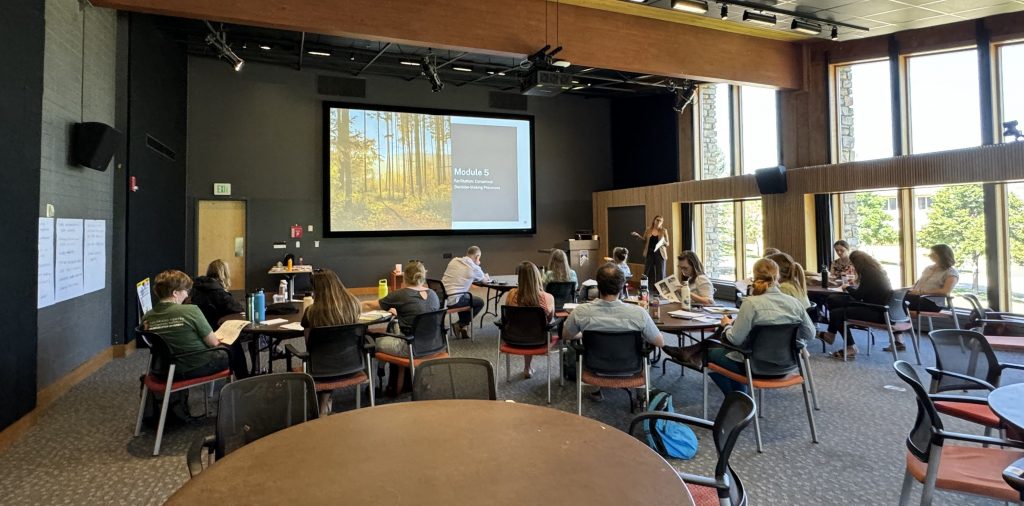by CDR Program Manager Laura Hickey
The Colorado Forest Collaboratives Network (CFCN) completed is annual Forest Collaboratives Summit in La Plata County in September. Organized by CFCN Coordinator Katie McGrath Novak and CSU CCC intern Priscila Santos Urteaga, the event focused on “Scaling and Sustaining Local Impact;” speakers and topics highlighted the successes of place-based collaboratives while recognizing the challenges of aligning goals and opportunities across local, regional, state, and national levels—a topic CDR is well acquainted with.

CDR Program Manager Laura Hickey shares how projects, pedagogy, and passion all dovetailed at the event:
Projects
This year, the Colorado Forest Health Council prioritized the creation of a Forest Resilience Planning Guide, an initiative facilitated by CDR. The Forest Health Council serves as a volunteer stakeholder body, providing a collaborative forum to advise the Governor, through the Executive Director of the Department of Natural Resources, and the Colorado General Assembly on various issues, opportunities, and threats facing the state’s forests. The guide will assist local agencies, large landowners, and place-based collaboratives in better coordinating forest management strategies and leveraging resources to mitigate and recover from common disturbances across counties and Tribal nations in Colorado. During the Summit, Laura facilitated three small group discussions focused on how the guide can enhance collaborative capacity and inform state programs and policies. The creation of the Forest Resilience Planning Guide exemplifies the State’s commitment to fostering coordination among local agencies and landowners, enabling them to collaboratively address common disturbances.
Pedagogy
Day three of the Summit showcased CDR’s legacy of facilitation and conflict management capacity-building. Melissa Bade and Laura Hickey led a half-day training session for participants from academia, government, and non-profit sectors. The training began with reflections on the benefits of collaboration in forest management, allowing participants to share insights about the value of shared learning, nimble implementation, and achieving goals that would be impossible to tackle alone. Ultimately, these experiences underscored the importance of enhancing collaborative capacity, emphasizing how effective teamwork can lead to improved outcomes for Colorado’s forests and the communities that depend on them. By strengthening these skills, stakeholders can navigate conflicts more effectively and foster a more inclusive approach to forest management, ensuring the long-term health and resilience of our vital ecosystems.
Passion
Before joining the CDR team, Laura spent five years researching the relationships between forest ecosystem structure, function, and resilience after various disturbances. At CDR, she has found a natural fit in convening natural resource stakeholders from diverse sectors to navigate the multifaceted issues posed by climate change, wildfires, and ecological threats—all while building collaborative capacity along the way. By harnessing shared knowledge and enhancing teamwork, we can work toward developing comprehensive, tailored resource management solutions that benefit the environment, local economies, and communities alike.
